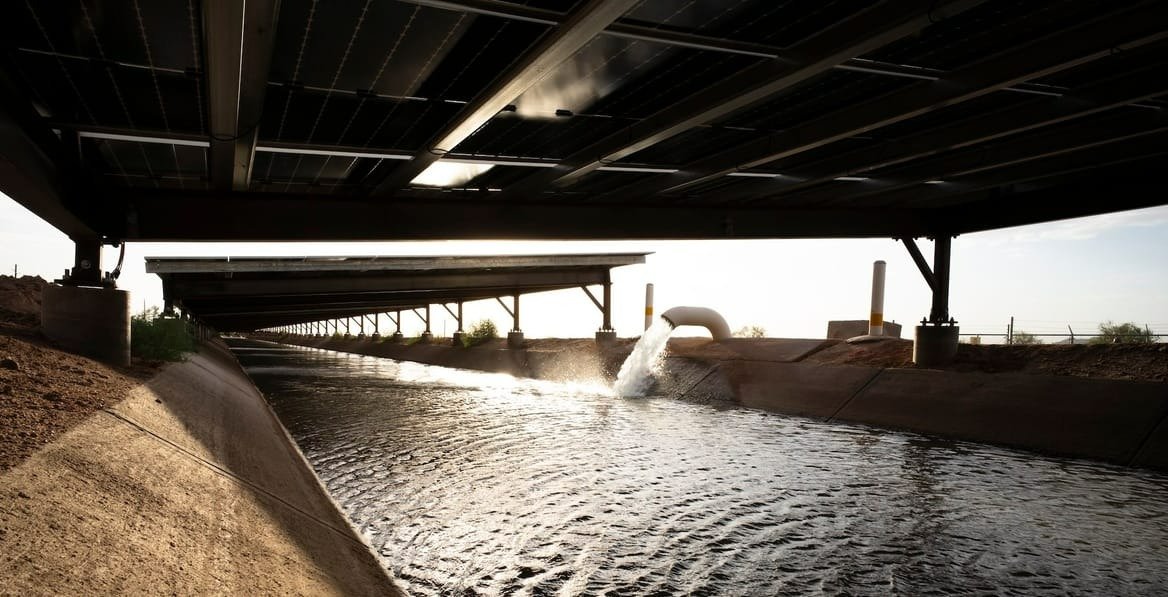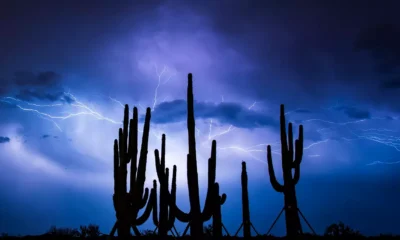arizona
The US Prepares to Unveil Its First Solar-Powered Canal

“Cows, cars, and couches somehow always end up in the canal,” said Lepley.
The complex requirements for canal-based solar arrays, including additional steel and concrete, make them more expensive and technically challenging compared to conventional ground-mounted systems.
In collaboration with George Cairo Engineering, Tectonius has reviewed several designs for the over-canal solar project at Casa Blanca Canal. “We examined steel and concrete usage, solar panel costs, wind lift and weight, power production, and access,” Lepley noted. The engineers finalized a patented, modular, and prefabricated design that ensures safety over moving water while maintaining canal flow and accessibility.
The Gila River Indian Community is advancing with this groundbreaking solar canal project, the first of its kind in the US.
The solar array design will extend along the canal, connecting to the local electrical grid every 1,000 feet, approximately every one megawatt.
Lepley mentioned that the capital cost for canal-based solar is roughly twice that of land-based systems, primarily due to the steel and foundation expenses needed to support the photovoltaic panels above the canal. Specific cost figures per megawatt-hour were not disclosed, but Lepley emphasized that in hot, arid regions, canal-based solar demonstrates higher value, mitigating higher initial capital costs.
“Canal solar offers greater power production per land area, cleaner water, reduced power transmission losses, and significant evaporation reduction,” he stated.
Lepley’s research identified a 1.9 percent increase in solar power generation, attributed to decreased infrared radiation reflection from the ground. This uptick translates to 21 gigawatt-hours of electricity or approximately $2.3 million annually.
The savings from this approach have been passed on to ratepayers, while also preventing significant CO2 emissions without disturbing large sections of the Sonoran Desert.
Although still in the pilot phase, the broader potential is noteworthy. Enveloping the 8,000 miles of canals managed by the Bureau of Reclamation with solar panels could produce over 25 gigawatts of renewable energy and significantly curb water evaporation, as mentioned in a 2023 letter by a coalition of over 100 climate and environmental organizations to Interior Secretary Deb Haaland and Bureau Commissioner Camille Touton.
Set to integrate with the distribution grid by the end of summer, the Casa Blanca project will offer the U.S. its first glimpse of this innovative clean energy solution.
This story was first published by Canary Media, an independent, nonprofit newsroom covering the transition to clean energy and offering solutions to the climate crisis, and is republished here with express permission.


















